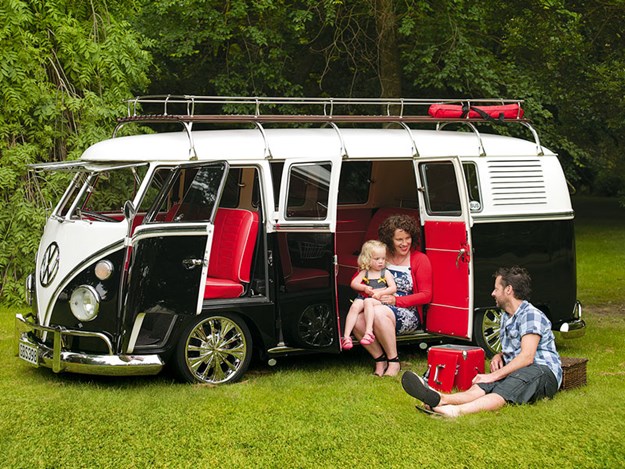 |
|
An early VW T2 van known as a Splittie because of its divided front windscreen |
On 29 September 1969, when South Africa experienced its worst earthquake on record, I was undergoing a minor upheaval of my own. That day my husband and I were waving goodbye to our colleagues of two years at the Oppenheimer Hospital in the Orange Free State to begin a lengthy expedition of the African continent.
For this purpose, we’d bought a Type 2, T1 Volkswagen Kombi van. It was one of the earlier models, shaped like a shoebox on wheels and known as a ‘Splittie’ because the windscreen was divided in two.
The interior was empty before we installed a plywood settee/bed, under which we stored our clothes, camera and shoes. Above the lift-up door over the rear engine was a boot on which we placed a basin and a two-ring gas cooker which served as the kitchen.
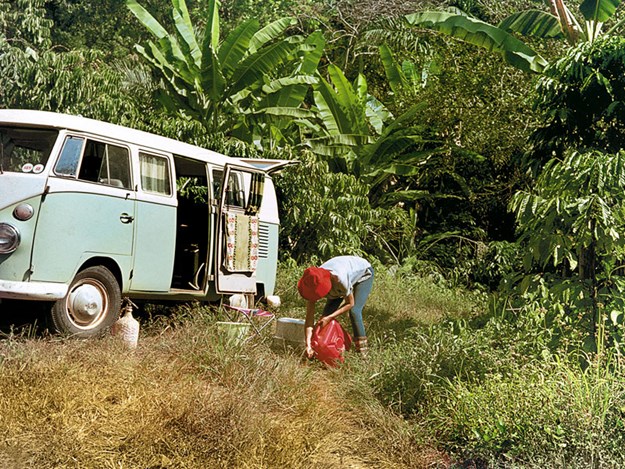 |
|
Ablutions, Kombi style (Africa, 1969) |
Even though the fit-out was a primitive affair I can’t remember being particularly uncomfortable. In the 50s, 60s and 70s, Kombi campervans were a-la-mode for explorers, itinerants and the counterculture of free-spirited idealists (aka hippies).
The VW Type 2s were workhorses, practical, easy to manoeuvre and simply constructed. Their air-cooled engines were not necessarily more reliable than others but simply designed and easy to fix.
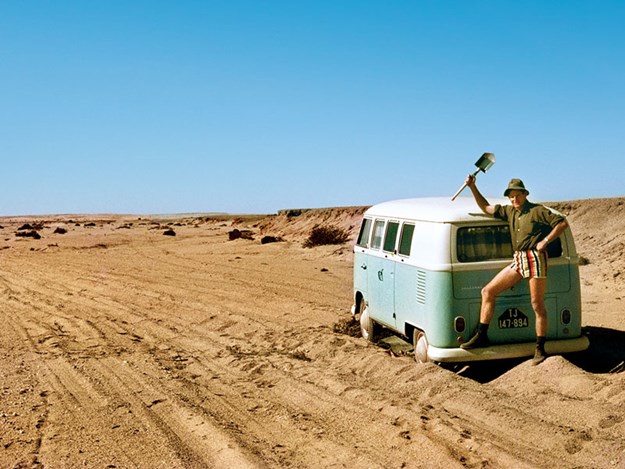 |
|
Bogged in sand or mud the Kombi could easily be dug out |
In time, the engine became peppered with sand and layered in mud but it kept going without complaint and in our minds our Splittie became personified - the third member of the team. We referred to her as ‘she’ or ‘her’ and applauded the way she looked after us. Our eventual parting was a wrench and I’ve had a love affair with Kombi campers ever since.
The Type 2 Kombi (short for ‘Kombinationsfahrzeug’, which loosely translates as ‘combination vehicle’) It was known officially (depending on body type) as the Transporter, Kombi or Microbus, or, informally, as The Bus (US), The Camper (UK), Pão de Forma – Loaf of Bread – (Portugal). In Europe it was commonly nicknamed the Bulli.
The Type 2 was the second model of Volkswagen. The first was the immensely popular ‘Beetle’ (Type 1) which had been developed in Germany pre-WW2 to fulfil the aspirations of Adolf Hitler and Ferdinand Porsche.
These two men were not politically aligned but they shared the same objective - to develop a simple and reliable car that millions of Germans could afford. They more than succeeded. In the following years people all over the world clamoured to own a Beetle.
Dutchman Ben Pon was an enthusiastic Beetle importer and had a big impact on what came next. After the war, in 1947, while he was visiting the VW factory in Germany, he conceived the idea of designing a commercial transporter using VW running gear.
The concept was simple – a box on wheels with a driver at the front and the engine at the back and plenty of cargo room in between. Two years later the Type 2 van was launched. It had an air-cooled engine hidden under the floor at the back and nothing in front of the windscreen.
The driver perched over the front wheels and steered by means of a bus-style steering wheel. Bullis became highly sought after and served a myriad uses as delivery vans, people movers, pick- ups, and school buses.
For the next four decades, although there were many variations and generational changes, the basic design concept remained the same. Over that time roughly five million Bullis rolled off production lines in several countries around the world.
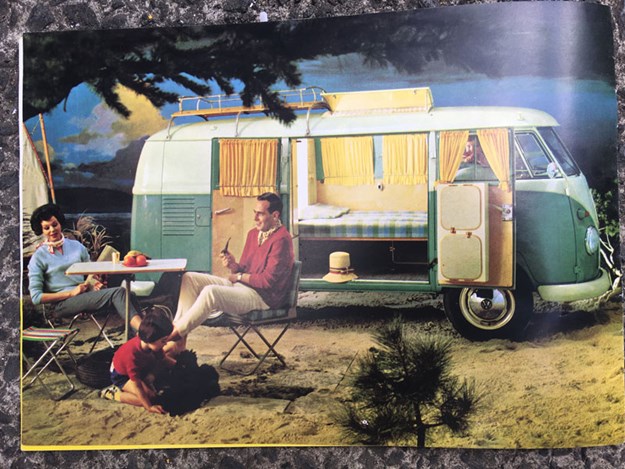 |
|
A 1966 Kombi advert |
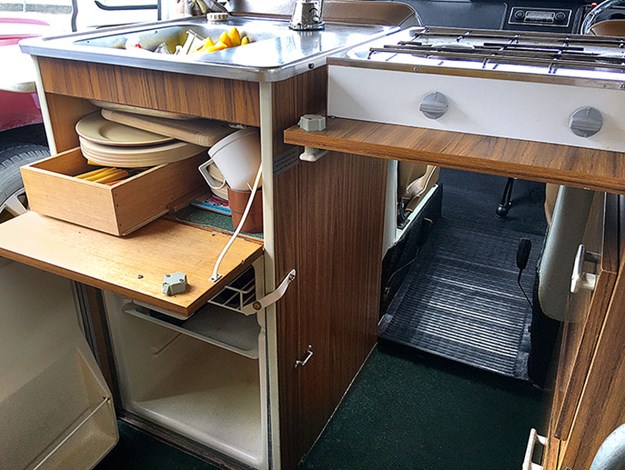 |
|
The configuration of an early Westfalia kitchen with a fold-down cook top sink fridge and storage cupboard |
Although not the first ‘driving house’ (as my five-year-old friend, Archie, calls a motorhome) the VW Kombi camper is often credited with kicking off the massive worldwide phenomena that motorhoming is today.
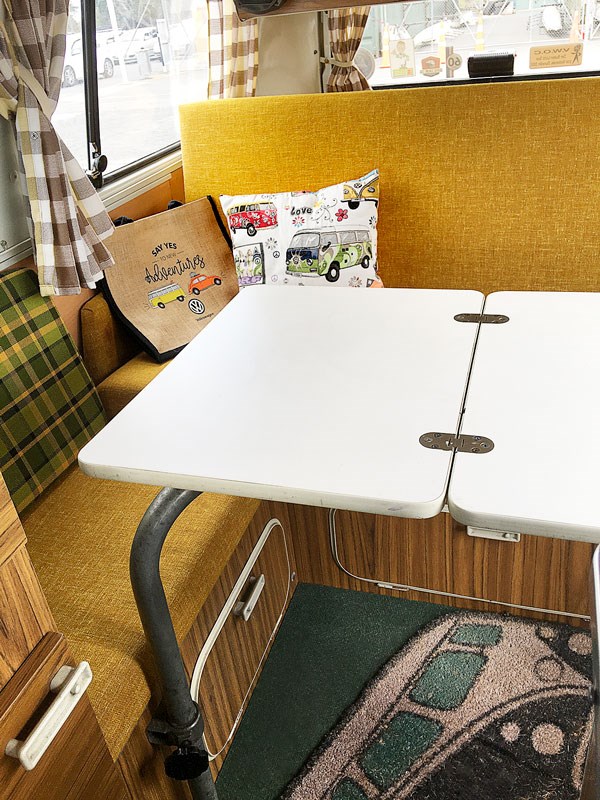 |
|
A Westfalia settee/bed and foldaway table |
Volkswagen never did its own conversions but partnered with some convertors such as Westfalia. For classic Kombi aficionados today nothing is quite as revered as the ‘Westie’. Over the years new Type 2 models appeared – too many to describe here.
Notably in 1968, Bay window models (the T2) were introduced to replace the split screen style and there were many other variations that followed. By now VW factories had also been set up in Australia, Brazil, Mexico and South Africa.
Manufacture of the T2 finished in Germany in 1979 because it had been replaced by the vastly altered T3 (also known as the T25 in the UK and as a Vanagon in the USA). The T3 was a radical jump forward from Splitties and Bays, a total redesign that was wider with larger windows, a tailgate, and a new front style. Very little was carried over from the previous models.
But T2 Kombi production continued in other countries and eventually the very last of these ‘hip on the tarmac’ icons rolled off the one remaining production line in Brazil on New Year’s Eve, 2013. Over 10 million Volkswagen T1 and T2 vans had been produced since the model was first presented in Germany 63 years before.
Any of us over 50 who once had a splash of hippie or wanderlust in our blood, felt a twinge of regret for the demise of the fabled van that, converted to a camper, had offered us the freedom of the open road.
Later models do not have quite the same iconic status of the Splittie and the Bay even though they too were massively successful, selling in huge numbers and enjoying a loyal following.
Whatever the model or style of fit out, the classic T1 and T2 van are instantly recognisable invoking in many of us nostalgia for our youth and times of carefree adventure. And 2013 was not the end of the road for this endearing workhorse.
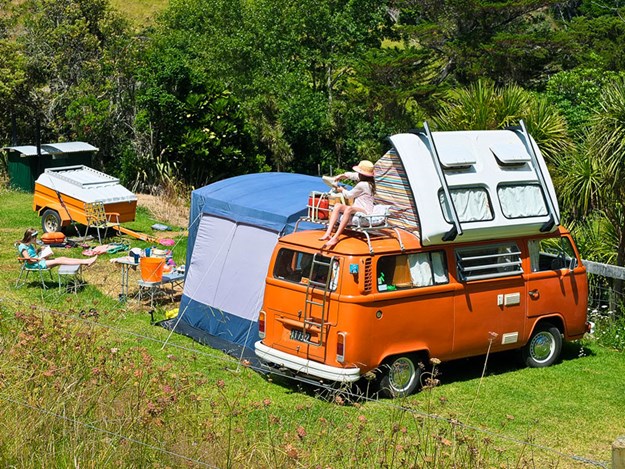 |
|
A beautifully restored and thoroughly used classic Kombi.
|
Back in New Zealand I met up with Knut Erbs, who, in 1984, bought a German manufactured 1973 Westfalia in original condition. His passion for VWs and Kombi vans in particular has never diminished.
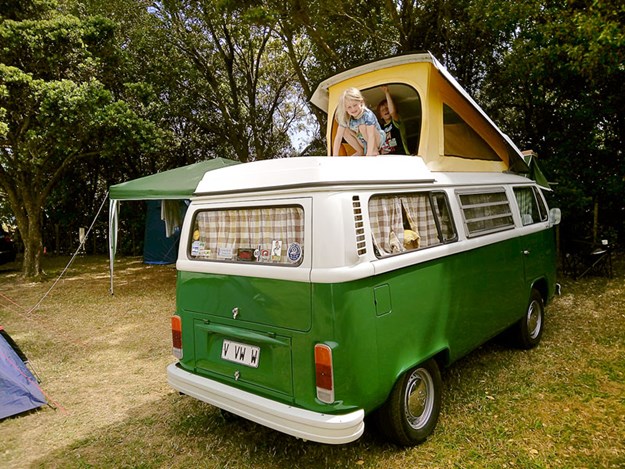 |
|
Knut Erb’s 1973, original Westfalia Kombi with pop-top and typical check curtain fabric |
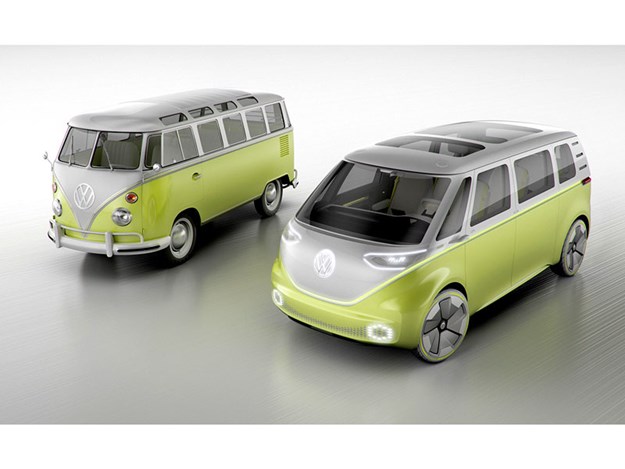 |
|
The modern VW electric ID Buzz concept (right) recalls the shape of the legendary VW T2 (left) |
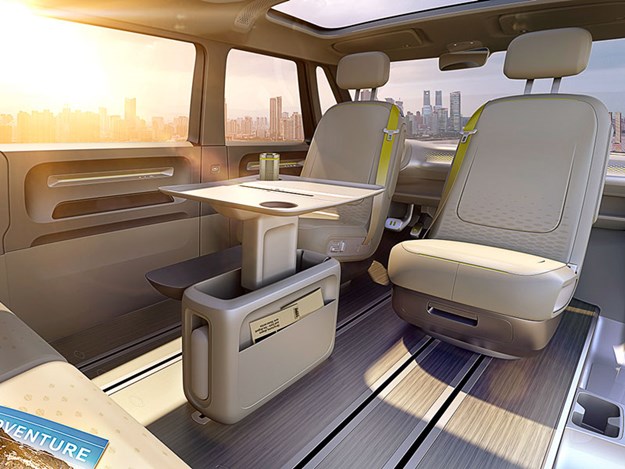 |
|
There’s nothing traditional about the interior of the ID Buzz
|
Find motorhomes, RVs & caravans for sale in NZ





